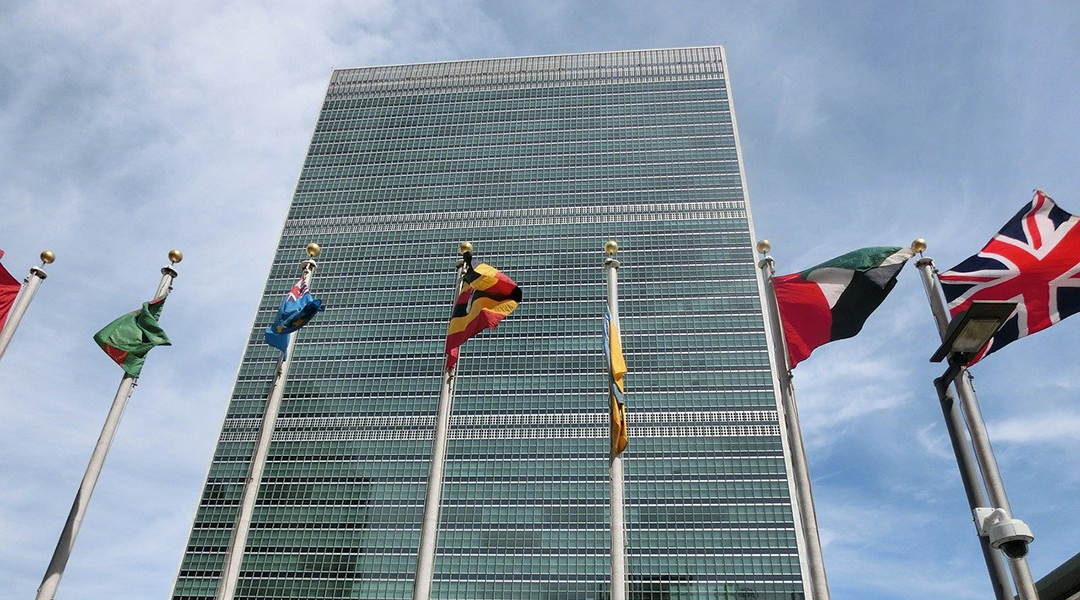The COVID-19 pandemic has provided a unique opportunity to put governments on track to meet the main target of the Paris Agreement, which aims to reduce global greenhouse gas emissions to limit global temperature increases to 2 degrees Celsius above preindustrial levels.
A new report from the UN Environment Programme (UNEP), Frankfurt School-UNEP Collaborating Centre, and BloombergNEF (BNEF) shows that falling costs of renewable energy as a result of the COVID-19’s affect on the fossil fuel industry could allow country’s to prioritize clean energy in economic recovery packages.
“The chorus of voices calling on governments to use their COVID-19 recovery packages to create sustainable economies is growing,” said Inger Andersen, Executive Director of UNEP, in a press release. “This research shows that renewable energy is one of the smartest, most cost-effective investments they can make in these packages.
“If governments take advantage of the ever-falling price tag of renewables to put clean energy at the heart of COVID-19 economic recovery, they can take a big step towards a healthy natural world, which is the best insurance policy against global pandemics.”
With a growing global economy, a population that will expand from 7.4 billion today to more than 9 billion in 2040, and increased urbanization, global energy consumption is expected to soar over the next decade, which puts meeting the Paris Agreement goals at significant risk if something drastic is not done.
The UN report, which became available on June 10, analyzed 2019 investment trends and clean energy commitments made by countries and corporations over the next decade. It found that the cost of installing renewable energy, such as wind and solar, has hit new lows, which means future investments will deliver far more capacity.
Renewable energy technologies, which are a part of the low-carbon facet of global energy supply, are rapidly increasing their presence in many countries of the world. However, there is still an unwillingness to give sufficient importance to renewables as a result of the low cost of fossil fuels and challenges of implementing new technologies such as lack of infrastructure and economic scale. But there is hope among experts that this is changing.
“Renewables such as wind and solar power already account for almost 80 per cent of newly built capacity for electricity generation,” said Svenja Schulze, Minister of the Environment, Nature Conservation and Nuclear Safety, Germany. “Investors and markets are convinced of their reliability and competitiveness.”
“The promotion of renewables can be a powerful engine for the recovery of the economy after the Coronavirus crisis, creating new and secure jobs,” she added. “At the same time, renewables improve air quality thus protecting public health. By promoting renewable energies within the framework of Coronavirus economic stimulus packages, we have the opportunity to invest in future prosperity, health and climate protection.”
The report found that 2019 marked an important year in renewable energy investment, with the highest solar power capacity additions in one year (at 118 GW), the highest investment in offshore wind in one year (at USD 29.9 billion, up 19% year-on-year), the highest renewables investment ever in developing economies other than China and India (at USD 59.5 billion), and a broadening investment, with a record 21 countries and territories investing more than USD 2 billion in renewables.
Nils Stieglitz, President of Frankfurt School of Finance and Management, said: “We see the energy transition is in full swing, with the highest capacity of renewables financed ever. Meanwhile, the fossil fuel sector has been hit hard by the COVID-19 crisis – with demand for coal- and gas-fired electricity down in many countries, and oil prices slumping.
“The climate and COVID-19 crises — despite their different natures — are both disruptions that command attention from policy makers and managers alike. Both crises demonstrate the need to increase climate ambition and shift the world’s energy supply towards renewables.”
The 2019 investment brought the share of renewables, excluding large hydro, in global generation to 13.4%, up from 12.4% in 2018 and 5.9% in 2009. This means that in 2019, renewable power plants prevented the emission of an estimated 2.1 gigatonnes of carbon dioxide, a substantial saving given global power sector emissions of approximately 13.5 gigatonnes in 2019.
“Clean energy finds itself at a crossroads in 2020,” said Jon Moore, Chief Executive of BloombergNEF. “The last decade produced huge progress, but official targets for 2030 are far short of what is required to address climate change. When the current crisis eases, governments will need to strengthen their ambitions not just on renewable power, but also on the decarbonization of transport, buildings and industry.
Energy decision makers need to take a hard look at where they stand and how choices made today will influence generations to come.

















